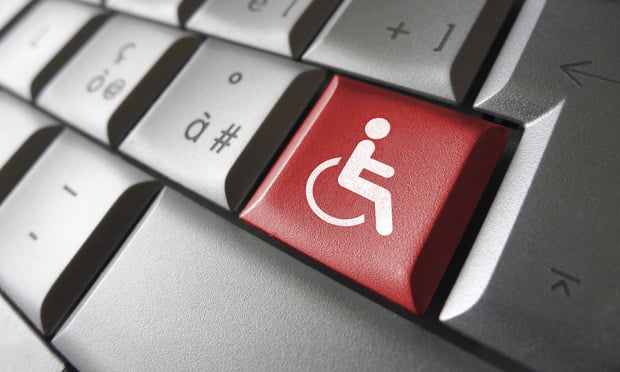When the Americans with Disabilities Act (ADA) was first adopted in 1990, equal access for disabled individuals was largely a question of physical access. ADA claims largely centered around the rights of disabled people to access buildings, job opportunities and critical information as any other citizen would.
Since then, the digital world has expanded enormously, and with it, a whole other infrastructure for Americans with disabilities to navigate. Moreover, given the breakneck pace of technology and web innovation, trying to keep technology ADA-accessible has created some serious headaches for organizations.
This content has been archived. It is available through our partners, LexisNexis® and Bloomberg Law.
To view this content, please continue to their sites.
Not a Lexis Subscriber?
Subscribe Now
Not a Bloomberg Law Subscriber?
Subscribe Now
LexisNexis® and Bloomberg Law are third party online distributors of the broad collection of current and archived versions of ALM's legal news publications. LexisNexis® and Bloomberg Law customers are able to access and use ALM's content, including content from the National Law Journal, The American Lawyer, Legaltech News, The New York Law Journal, and Corporate Counsel, as well as other sources of legal information.
For questions call 1-877-256-2472 or contact us at [email protected]








